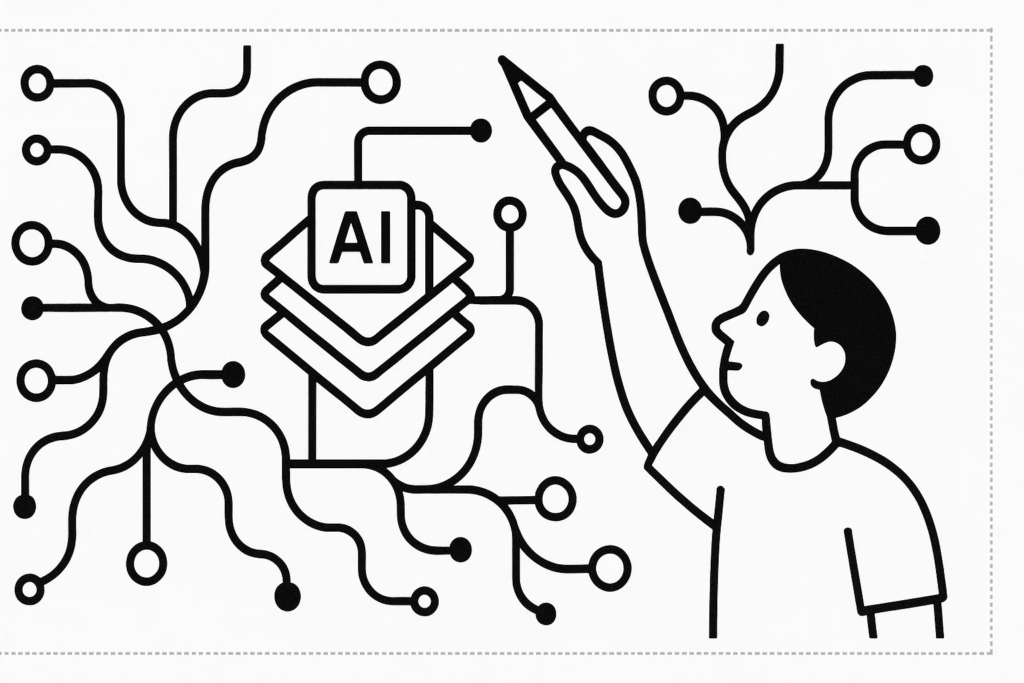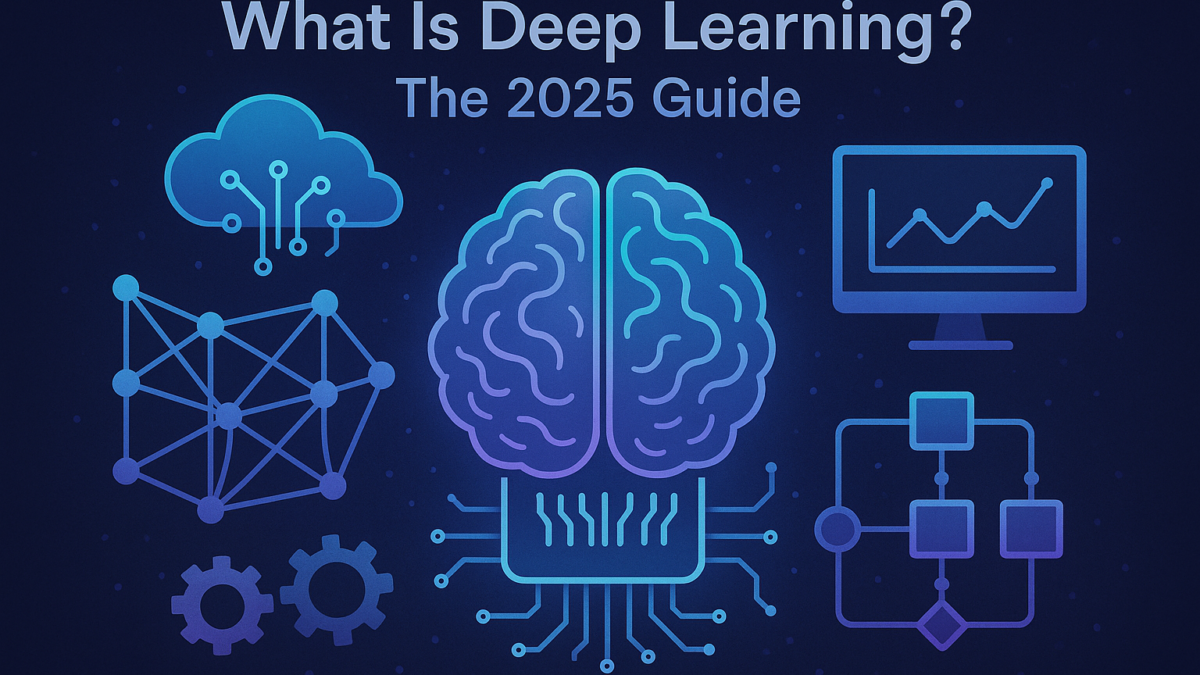Table of Contents
Introduction
Artificial intelligence (AI) continues to reshape industries—from healthcare to finance, e-commerce, and entertainment. At the core of this revolution is deep learning, a subset of machine learning that mimics how the human brain processes data. In this 2025 guide, we explore what deep learning is, how it works, and why it’s powering the next wave of tech innovation.
What is Deep Learning?
Deep learning is a branch of machine learning that uses artificial neural networks to analyze data and make intelligent decisions.
Unlike traditional algorithms that require structured input and manual feature extraction, deep learning models learn representations automatically from raw data—images, audio, text, and more.

Definition:
Deep learning refers to the use of multilayered neural networks to model complex patterns and make accurate predictions from large datasets.
How Does Deep Learning Work?
At its core, deep learning mimics the structure of the human brain using artificial neurons arranged in layers:
- Input Layer: Takes in raw data (e.g., pixels in an image)
- Hidden Layers: Multiple layers of neurons that perform complex computations and extract features
- Output Layer: Produces the final prediction (e.g., object classification)
This architecture is called a deep neural network because of the many hidden layers.
Key Concepts:
- Neural Networks: Algorithms designed to recognize patterns.
- Backpropagation: A method for fine-tuning weights in the network based on prediction errors.
- Activation Functions: Define how signals flow through neurons (e.g., ReLU, Sigmoid).
- Loss Function: Measures the difference between predicted and actual values.
Why Is Deep Learning So Popular in 2025?
Thanks to improved hardware (like GPUs & TPUs), massive data availability, and open-source tools, deep learning has become more accessible than ever.
Trends Driving Deep Learning Adoption:
- Generative AI: Tools like ChatGPT, Sora, and DALL·E use deep learning to generate text, video, and images.
- Autonomous Systems: From self-driving cars to warehouse robots, real-time deep learning models are powering decision-making.
- Personalized Marketing: Deep learning enables hyper-targeted campaigns based on behavior and preferences.
👉 Read our blog on:The Rise of Generative AI in Marketing
Real-World Applications of Deep Learning
Deep learning isn’t just for tech giants. It’s used by startups, enterprises, and researchers globally.
Use Cases Across Industries:
| Industry | Application |
|---|---|
| Healthcare | Disease diagnosis, medical imaging (e.g., detecting cancer via MRI scans) |
| Finance | Fraud detection, algorithmic trading |
| Retail & E-commerce | Personalized product recommendations, visual search |
| Automotive | Lane detection, autonomous driving systems |
| Entertainment | Content recommendation (e.g., Netflix, Spotify) |
Deep Learning vs Machine Learning: What’s the Difference?
Though related, deep learning and machine learning are not the same.
| Feature | Machine Learning | Deep Learning |
|---|---|---|
| Data Requirement | Small to medium datasets | Large datasets required |
| Feature Engineering | Manual | Automatic feature learning |
| Performance | Limited with unstructured data | Excellent with complex, unstructured data |
| Interpretability | More interpretable | Often a black box |
In short: All deep learning is machine learning, but not all machine learning is deep learning.
Tools & Frameworks to Know in 2025
If you’re planning to explore deep learning—whether for research or product development—these tools are essential:
- TensorFlow: Google’s open-source framework for building DL models
- PyTorch: Preferred by researchers for flexibility and ease of debugging
- Keras: High-level API for rapid prototyping
- OpenCV: For computer vision and image processing
💡 Pro Tip: Use platforms like Google Colab or Kaggle Kernels for free GPU-powered model training.
Future of Deep Learning: What’s Next?
As we move deeper into 2025, several exciting innovations are shaping the future of deep learning:
Emerging Trends:
- Federated Learning: Training models across decentralized devices without sharing raw data.
- Multimodal Models: Combining text, video, and audio understanding into a single model.
- Edge AI: Running deep learning models locally on smartphones and IoT devices.
- Explainable AI (XAI): Making deep models more transparent and trustworthy.
Recap: Why Deep Learning Matters in 2025
- Mimics human learning using artificial neural networks
- Excels in analyzing large, complex, unstructured data
- Powers real-world innovations in every industry
- Supported by robust open-source tools and cloud resources
- Driving the future of autonomous systems and generative AI
Ready to Dive Deeper into Deep Learning?
Whether you’re a tech enthusiast, data scientist, or business leader, understanding deep learning can give you an edge in 2025. As businesses become more AI-first, knowing how to implement or integrate deep learning solutions can help drive smarter products and better outcomes.
👉 Need help implementing deep learning into your business strategy?Contact us today to explore AI consulting and development services.





